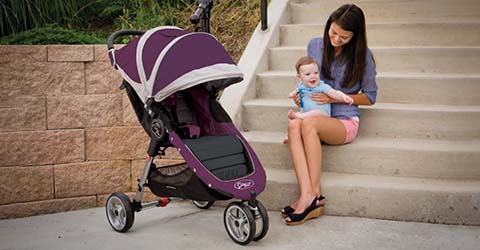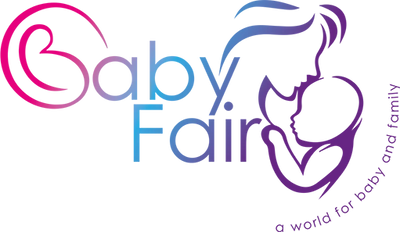Searching for a cosy travel partner for your kid, you’ll see rows and rows of pushchairs. So, to give an edge to your kiddies with the convenient journey. you realise how to have the right one for you.
Whether you go for the pushchair or stroller, the quest for a snug and hassle-free travel experience for your child, the many options available can be overwhelming. However, ensuring the perfect pushchair is essential to give your little one these differences can help parents choose the most suitable option for their needs.
Let's compare the features, functionality, and usage of pushchairs and strollers, shedding light on their distinctions and helping parents make informed decisions when selecting the right mode of transport for their little ones.
What is a stroller?
A stroller is a type of baby carriage or wheeled device for transporting infants or young children. It is typically lightweight, compact, and easy to manoeuvre.
Strollers often feature a folding mechanism, making them convenient for storage and transportation.
They are suitable for babies sitting upright unassisted, usually around 6 months old.
Note: Consider age, terrain, and preferences when choosing between them and having the right travel system ensures a comfortable and convenient transport for your child.
Benefits of a Stroller
- It is versatile.
- Several models feature 5-point harnesses for superior safety.
- They can be easily folded down and are portable.
- Equipped with a built-in seat that sits lower than the surface.
- Ideal for various uses.
- Includes safety belts with chest, waist, and crotch straps.
- Comes with front trays for holding food and bottles.
- Provides essential storage space.
Stroller Feasibility:
They are commonly used for short trips, running errands, and navigating crowded spaces.

Major differences between pushchairs and strollers?
Pushchair:
A pushchair is commonly used in the UK to refer to a stroller or baby carriage.
It is suitable for older babies and toddlers who can sit up unaided.
Pushchairs usually have seats that can be adjusted to different recline positions and may come with additional features like a canopy and storage.
Also read: V Tech Baby Monitors - Top Picks for New Parents
Stroller:
A stroller is a lightweight, portable option for babies and toddlers. It typically has a folding frame, making it easy to transport and store. Strollers are suitable for babies who can sit up independently and provide a comfortable seated position.
| Feature | Pushchair | Stroller |
|---|---|---|
| Design | Three-wheeled design, larger and sturdier frame | Lightweight and compact design, easy to manoeuvre |
|
Versatility |
Can be converted into prams |
Suitable for babies who can sit upright unassisted |
| Terrain | Suitable for all-terrain use | Ideal for urban environments and short trips |
| Features | Adjustable handles, large storage baskets | Lightweight construction, compact when folded |
| Usage | Longer walks, outdoor activities | Short trips, running errands, convenient for travel |
What is a Pram?
Pram is a baby carriage designed for transporting infants. It is typically designed to allow the baby to lie flat, providing a comfortable and safe environment for newborns and young babies. Prams often have large wheels, a sturdy frame, and a hood or canopy to protect the baby from the elements.
Prams are ideal for taking young babies on walks or outings, ensuring they are secure and comfortable.
Pram Benefits
- Comfort: Prams are designed with a flat, spacious bed that allows infants to lie down comfortably, which is important for their spinal development and overall well-being.
- Safety: Prams provide a secure environment for newborns, with sturdy frames and safety features such as harnesses and brakes.
- Protection: Many prams come with a hood or canopy that shields babies from the sun, wind, and rain, protecting their delicate skin and eyes.
- Convenience: Prams often have storage baskets underneath, making it easy for parents to carry baby essentials like diapers, bottles, and toys.
Pram vs Stroller
| No. | Stroller | Pram |
|---|---|---|
| 1. | It is designed for older infants or toddlers | Designed for newborns and young infants |
|
2. |
It is often lightweight and compact, making it easier to manoeuvre and transport. |
It tends to have a larger and bulkier frame for stability and comfort. |
| 3. | Usually, Suitable for outdoor use and navigating different terrains. | Primarily used for leisurely walks or strolling in parks. |
| 4. | Offers a variety of features such as storage compartments, adjustable handles, and a canopy for sun protection. | Focuses on providing a cosy and comfortable space for the baby. |
| 5. | Ideal for families on the go and active lifestyles. | Preferred by parents who prioritise a traditional and classic carriage style. |
What is a Buggy
A buggy is a lightweight and often more compact version of a pram, designed for transporting older babies and toddlers who can sit up and have better head and neck control.
Buggy Benefits
- Convenience: Buggies are lightweight and easy to fold, making them ideal for everyday use, travel, and quick storage. They can often be folded with one hand, which is especially useful for parents managing multiple tasks.
- Portability: The compact design of buggies allows them to fit easily into car trunks, public transportation, and narrow spaces, making them highly portable.
- Comfort for the Child: Buggies are designed with padded seats and adjustable recline positions, providing comfort for the child whether they are sitting up to explore or lying back to nap.
- Safety: Equipped with safety harnesses, brakes, and sturdy frames, buggies ensure that the child is secure during use. Some models also include additional safety features like five-point harnesses and reflective materials for visibility.
Pram vs Buggy
| No. | Pram | Buggy |
|---|---|---|
| 1. | Pram has a traditional design with a flat, fully-reclining seat. | Buggy is a Lightweight and compact design with an upright seating position. |
|
2. |
Usually, larger wheels for smooth and comfortable rides. |
Constitute smaller ones for easy manoeuvrability. |
| 3. | It is bulky and less portable due to its larger size. | It is compact and easily foldable for convenient transportation. |
| 4. | Usually designed for smoother surfaces and walks. | Mostly, suitable for various terrains, including uneven surfaces. |
| 5. | Canopy, storage basket, and compatibility with a car seat for travel. | Canopy, adjustable seat positions, and storage compartments. |
Age Limit
- Pram: It is specifically constructed for infants, particularly from birth until they are about six months old.
- Stroller: When infants can hold their heads up on their own without any support, you can transition them to strollers. In short, strollers are ideal for babies around six months old and above.
You may love to read: When to move baby from pram to pushchair?
Travel Friendliness
When purchasing a stroller or pram as a frequent traveler, it's essential to prioritize portability and convenience. Look for a lightweight, compact model that is easy to fold and unfold, ideally with a one-hand mechanism, as you'll often have your hands full. Ensure it has a collapsible design for compact storage, making it easier to transport in cars, on public transportation, or during air travel.
Additionally, consider models with durable wheels and a sturdy frame for navigating various terrains, as well as ample storage space for travel essentials. A travel-friendly stroller or pram will greatly enhance your mobility and convenience while on the go with your child.
Conclusion:
There is no huge distinction between a pushchair and a pram. Prams offer a lie-flat position for newborns, ideal for long walks. Strollers are lightweight and compact, suitable for older babies. So best option is stroller.
When deciding between a pushchair, stroller, or buggy, consider your child's age and developmental stage, your lifestyle, and how you plan to use the transport. If you have a newborn, a pushchair might be the best option to ensure their comfort and safety. For older babies and toddlers, a stroller or buggy might offer the convenience and portability you need for daily activities.
Ready to make your purchase? Check out our vast collection of strollers, pushchairs and more at babyfair.
FAQ’S
Do I need a stroller if I have a pram?+
If your kid is too young, a pram is suitable when kids don't have a hold on their heads. When your kid is 6 months old, you can shift your child to a stroller and need a bigger asset for a growing child.
Can I put my 4-month-old in a pushchair?+
A pushchair is ideal for infants older than six months. If a baby can sit up unaided, that indicates that they are old enough for a pushchair.
Can a 3-month-old go in a pushchair?+
A pushchair is ideal for older infants older than six months. If a baby can sit up unaided, that indicates that they are old enough for a pushchair.
Which is better, the stroller or a pram?+
The terms "pram" and "stroller" are frequently used synonymously. In the past, prams were only intended for younger infants who couldn't sit upright—older infants and toddlers who could sit up straight and in a pram.
Can you put a newborn in a stroller?+
Before your child is 4 months old, the American Academy of Pediatrics advises against using a pram without a car seat because your child could doze off and put himself in danger.
How long should a baby lie flat in a pram?+
It takes babies at least three months to begin developing head control and the ability to support themselves in a semi-upright position. You should hold off a little longer if your baby cannot properly maintain a sitting position or support their head.

 Free
Free Request Free
Request Free  Build Your
Build Your Fast Delivery on Every Product
Fast Delivery on Every Product 
 Klarna 0% Finance
Klarna 0% Finance 









